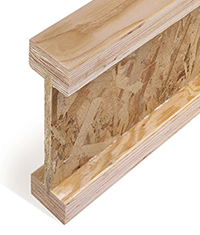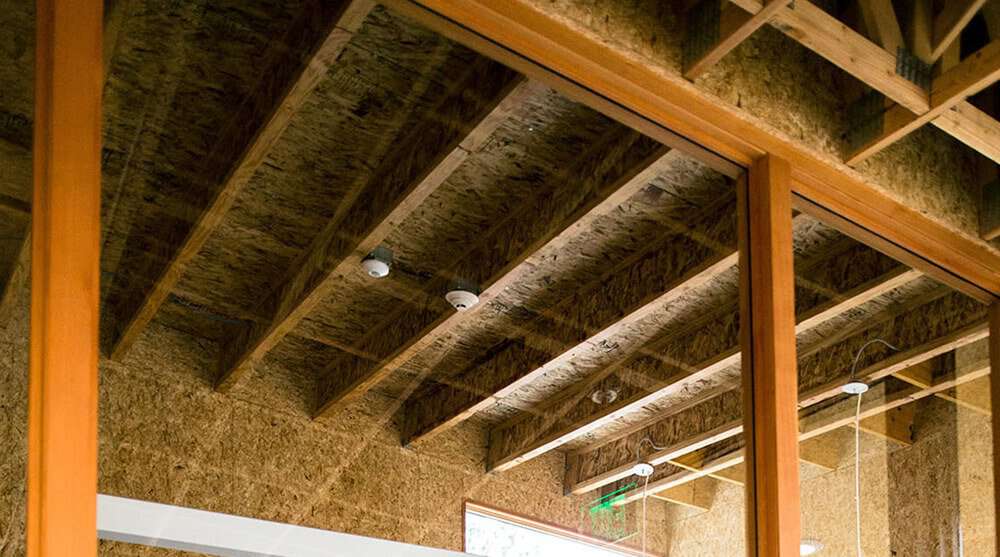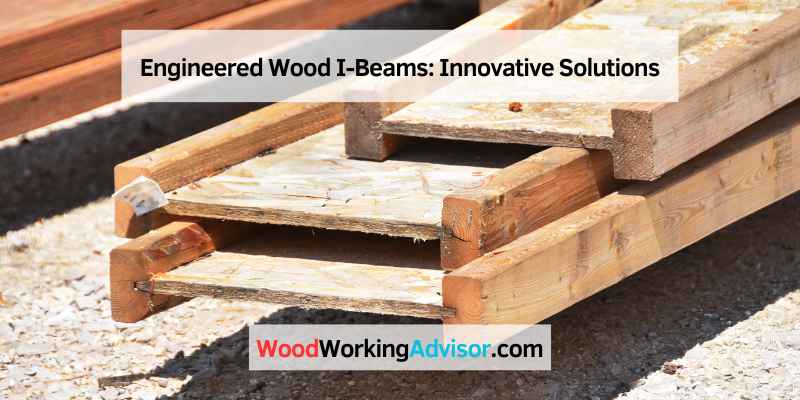Engineered Wood I-Beams are strong, versatile structural components commonly used in construction. Engineered Wood I-Beams are a popular choice for construction projects due to their strength, versatility, and cost-effectiveness.
These structural components provide excellent support and can be used in a variety of applications, from floor and roof systems to wall framing. By combining wood strands and adhesive resins, I-beams offer superior load-bearing capacity while minimizing the use of traditional solid wood materials.
This not only makes them more sustainable but also more cost-effective. Engineered Wood I-Beams are a reliable choice for builders and contractors looking to enhance structural integrity and efficiency in their construction projects.

Credit: www.apawood.org
The Evolution Of Engineered Wood I-beams
Engineered wood I-beams have come a long way since their inception. These innovative structural solutions have revolutionized the construction industry, offering a highly efficient and sustainable alternative to traditional solid wood beams. From solid wood to engineered solutions, the evolution of engineered wood I-beams has paved the way for stronger, more versatile, and eco-friendly construction practices.
From Solid Wood To Engineered Solutions
In the past, solid wood beams were the go-to choice for builders when it came to structural support. While solid wood beams have their advantages, they also have limitations, such as size and span restrictions. As construction needs grew more complex, it became clear that a new approach was needed. Enter engineered wood I-beams.
Engineered wood I-beams revolutionized the industry by combining the strength of wood with the efficiency of engineered materials. These beams are created by layering wood strands or veneers together with adhesive, resulting in a product that is stronger, more stable, and less prone to warping or splitting than solid wood.
Benefits Of Engineered Wood I-beams
The benefits of engineered wood I-beams are numerous, making them a popular choice among builders and architects alike. Some of the key advantages include:
- Strong and Durable: Engineered wood I-beams offer exceptional strength and durability, allowing for longer spans and greater load-bearing capabilities.
- Consistency: Engineered wood I-beams are manufactured to consistent dimensions, ensuring uniformity and precision in construction projects.
- Lightweight: Compared to solid wood beams, engineered wood I-beams are lighter, making them easier to handle and install.
- Cost-Effective: Engineered wood I-beams can be more cost-effective than solid wood beams, as they require less material and are less prone to waste.
- Eco-Friendly: The production of engineered wood I-beams utilizes wood from sustainable sources, making it a more environmentally friendly alternative to solid wood.
From their humble beginnings as solid wood beams to the advanced engineered solutions we have today, the evolution of engineered wood I-beams has transformed the construction industry. These beams not only offer superior strength and durability but also provide a sustainable and cost-effective solution for modern building projects. Whether it’s for residential or commercial construction, engineered wood I-beams are proving to be a game-changer in the world of structural support.
Design And Construction
When it comes to designing and constructing buildings, choosing the right materials is crucial. One material that has gained popularity in the construction industry is engineered wood I-beams. These innovative structural components offer a range of benefits, making them a preferred choice among architects and contractors. In this section, we will explore the design and construction aspects of engineered wood I-beams, including their structural composition and applications in construction.
Structural Composition
Engineered wood I-beams are designed to provide strength, stability, and durability to the structures they support. They are made up of three main components: a web, flanges, and connectors.
The web of the I-beam is typically made from oriented strand board (OSB) or plywood. It is responsible for transferring loads and distributing them evenly across the length of the beam. The web is designed to be strong and rigid, providing stability to the structure.
On either side of the web, there are flanges made from laminated veneer lumber (LVL) or solid lumber. These flanges act as the top and bottom chords of the I-beam and provide additional strength and support. The flanges are usually wider than the web, enhancing the load-bearing capacity of the beam.
To ensure proper connection and stability, engineered wood I-beams are equipped with connectors. These connectors can be metal plates, nails, or screws that hold the components together securely. The use of connectors in the construction of I-beams enhances the overall strength and safety of the structure.
Applications In Construction
Engineered wood I-beams are versatile structural elements that find applications in a wide range of construction projects. Their unique design and composition make them suitable for various building components, including:
- Floor Joists: Engineered wood I-beams can be used as floor joists, providing a strong and stable foundation for the floors of residential, commercial, and industrial buildings. They offer excellent load-bearing capacity and can span longer distances than traditional solid lumber joists.
- Roof Rafters: These I-beams are also commonly used as roof rafters, providing structural support to the roof structure. Engineered wood I-beams offer superior strength and stability, allowing for larger roof spans, thereby reducing the need for interior support walls.
- Beams and Headers: Engineered wood I-beams can be used as beams and headers in construction projects, supporting heavy loads and providing structural stability. They are an excellent alternative to traditional solid lumber beams, as they offer greater strength and dimensional stability.
- Wall Studs: In some construction applications, engineered wood I-beams can be used as wall studs, enhancing the overall strength and stability of the walls. They provide solid structural support and can resist twisting or warping.
Overall, engineered wood I-beams are a preferred choice for architects and contractors due to their structural composition and wide applications in construction. They offer superior strength, stability, and durability, making them a reliable option for modern building projects.
Economic And Environmental Impact
Engineered wood I-beams are a popular choice in construction due to their significant economic and environmental impact. These beams offer superior strength, durability, and versatility while also promoting sustainability and forest conservation.
Cost-effectiveness
Engineered wood I-beams are cost-effective as they are often more affordable than traditional solid wood beams. Additionally, their lightweight nature reduces transportation and installation costs, making them a practical choice for construction projects.
Sustainability And Forest Conservation
These I-beams contribute to sustainability and forest conservation as they are manufactured using smaller, fast-growing trees, reducing the demand for large, old-growth timbers. This sustainable approach helps preserve forests while providing a reliable construction solution.
Challenges And Limitations
Engineered Wood I-Beams offer numerous advantages, but they are not without challenges and limitations that need to be carefully considered.
Moisture Sensitivity
Engineered Wood I-Beams are sensitive to moisture, which can lead to warping or weakening the structural integrity.
Installation Considerations
Proper installation of Engineered Wood I-Beams is crucial to ensure optimal performance and safety.

Credit: www.redbuilt.com
Future Innovations And Potential
Engineered Wood I-Beams continue to evolve with advancements in technology and are finding expanding applications due to their versatility and efficiency.
Advancements In Technology
Innovations such as advanced composite materials and automated manufacturing processes are enhancing the strength and durability of Engineered Wood I-Beams.
- Composite materials offer higher load-bearing capacities
- Automated manufacturing ensures precision and consistency
Expanding Applications
Engineered Wood I-Beams are increasingly being used in diverse construction projects and are proving to be a sustainable alternative to traditional building materials.
- Residential constructions
- Commercial buildings
- Infrastructure projects
Frequently Asked Questions Of Engineered Wood I-beams
How Far Can An Engineered I Beam Span?
Engineered I beams can span distances of up to 100 feet, depending on the load and the type of beam used. It’s important to consult with a structural engineer to determine the appropriate beam size for your specific project.
What Is An Engineered I Beam?
An engineered I beam is a load-bearing component used in construction that provides structural support. It is made by combining wooden or metal flanges with a web in the shape of the letter “I”. This design distributes weight evenly, making it stronger and more efficient.
What Are The Disadvantages Of Engineered Lumber Joists?
The disadvantages of engineered lumber joists include potential for warping, higher cost compared to traditional joists, limited availability in certain areas, and difficulty in making on-site adjustments. Additionally, they may not be suitable for certain applications that require longer spans or higher load capacities.
Are I-joists Cheaper Than Lumber?
Yes, I-joists are typically cheaper than lumber due to their engineered design. They are cost-effective and provide efficient support for construction projects.
Conclusion
Engineered wood I-beams offer a durable and cost-effective solution for construction projects. With their superior strength and stability, these beams provide long-lasting support for residential and commercial buildings. As an eco-friendly alternative to traditional lumber, I-beams are shaping the future of construction, offering versatility and sustainability for modern builders.


